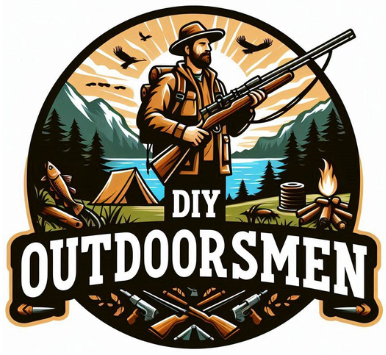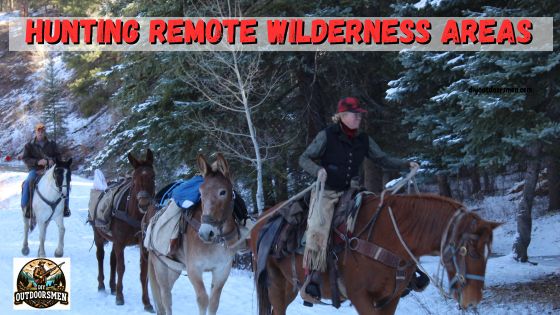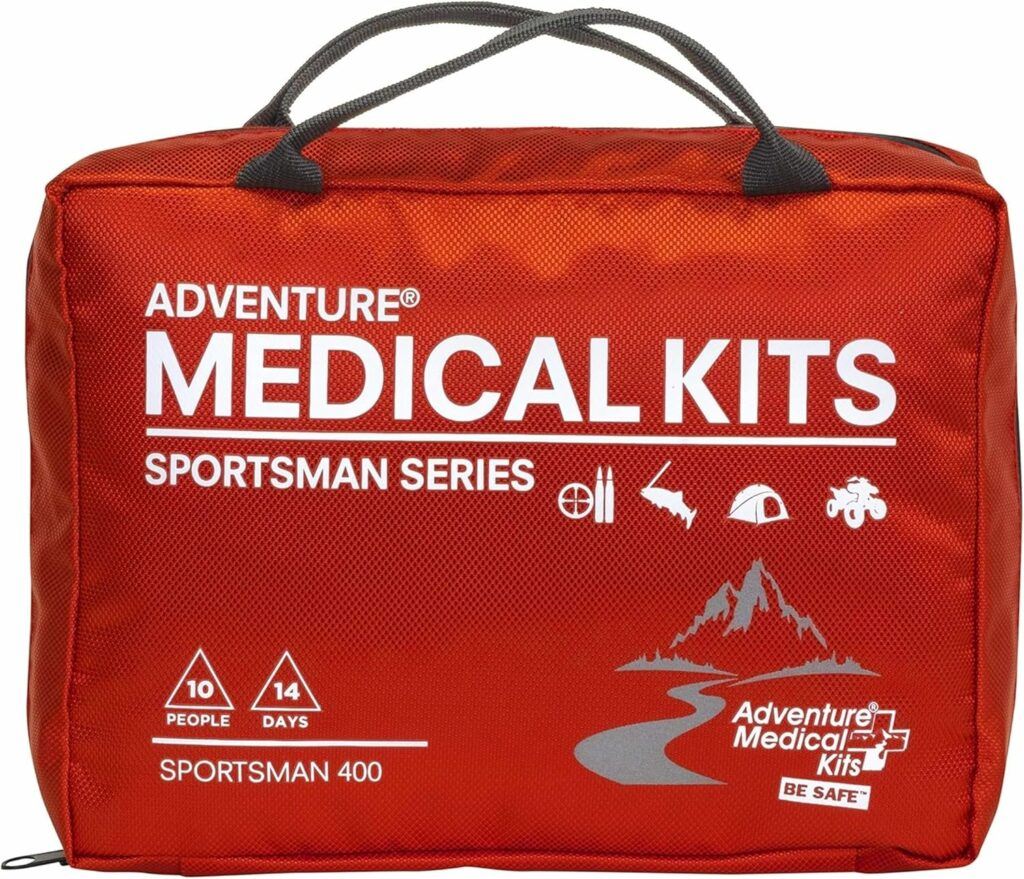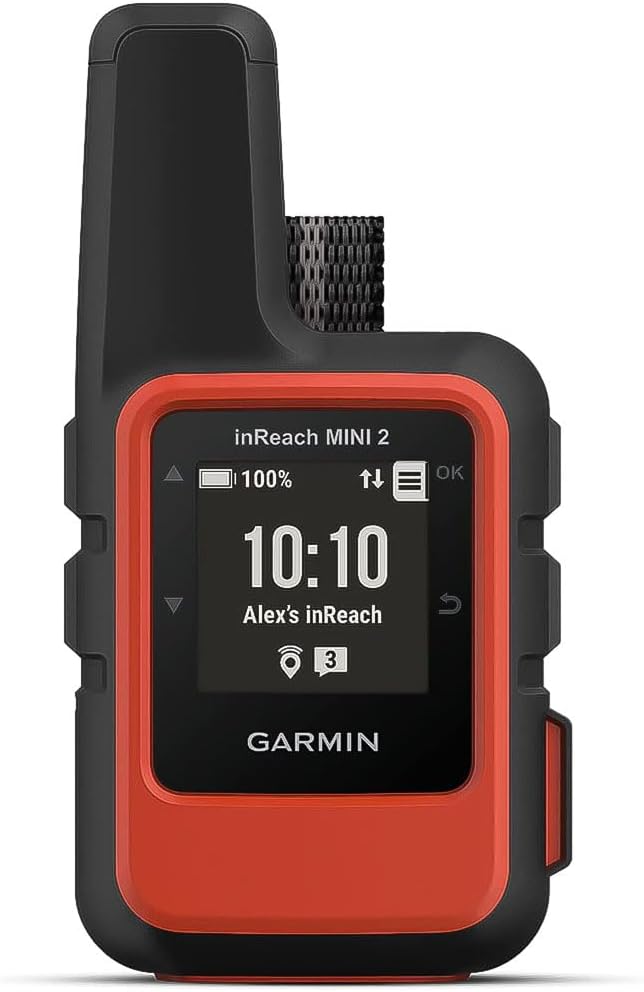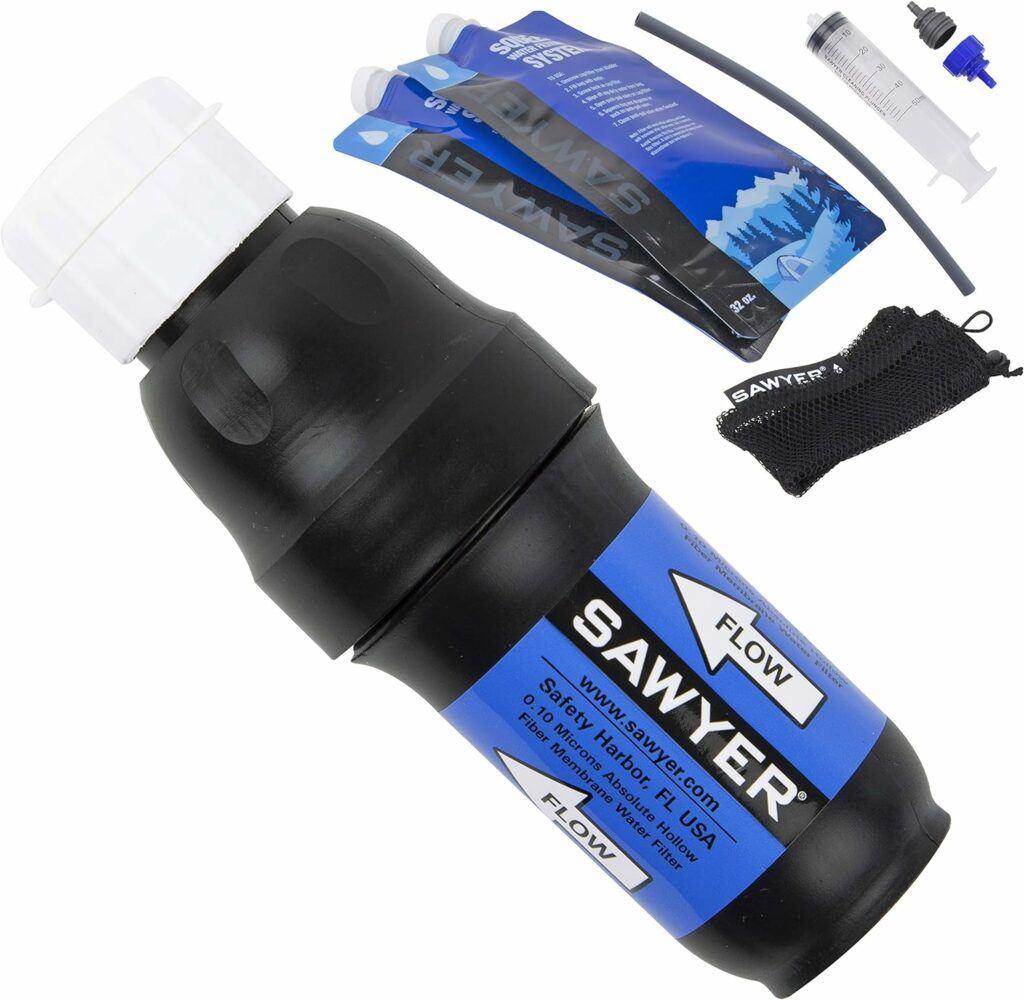Contents
Are you looking for a DIY hunting adventure that gets you away from the crowds of other hunters? An area with more, and less pressured animals? Then you might want to consider Hunting Remote Wilderness areas.
Now, I take hunting in the remote wilderness seriously, and you should too. It’s a demanding adventure that calls for peak physical condition and reliable gear. You will need to do your due diligence in planning and preparation if you want to have a safe and successful DIY Wilderness Hunt.
KEY POINTS AND TAKEAWAYS:
- Where and What area: Spend some time online e-scouting and talking with the local fish and game biologists to narrow your search.
- When and Weather: Weather can change quickly, know what to expect and prepare accordingly.
- Access Restrictions: You won’t be able to drive in the wilderness so will you hike in, bike in, or ride horses.
- Physical Requirements: Even if you ride in, during the hunt you will be doing a lot of hiking. Know the terrain and prepare yourself for the physical excertion of your hunt.
- Essential Gear Needs: Will you pack your gear in on your back? Will you pack it in on horseback? It will make a big difference in your gear needs and limitations.
- Emergency Preparedness: Be prepared with a good firstaid kit, water purification, communication, and leave a hunt plan at home so they know where to look and when to expect you to return.
I’ll share what I’ve learned about scouting, planning, and preparing for hunting remote wilderness areas so you can focus on the hunt without repeating some of the common mistakes hunters often make when venturing into wilderness areas to hunt.
Scouting Remote Wilderness Areas
Your first order of business is deciding which wilderness area you want to hunt. Choosing the right area to hunt is both a skill and an art. My approach is systematic. I start by E-scouting regions known for the particular species I’m targeting.
Google Earth and onX Hunt are tools I turn to for up-to-date satellite imagery. These resources help me identify potential hunting spots, water sources, feeding areas, and natural funnels that animals are likely to use.
I pair these satellite insights with topographical maps and trail maps for the wilderness areas I’m considering. Last, but not least, Checking with the local wildlife agency can also provide valuable information about herd health and population data, historic migration routes, seasonal patterns, and the rules, regulations, and access for hunting the wilderness area.
When deciding WHEN to hunt, you will want to consider factors like breeding seasons, seasonal migration patterns, and local weather patterns. These can greatly influence animal behavior, and your safety and comfort during the hunt.
Once I’ve narrowed down my choices, I plan a scouting trip where I can get a first-hand look at the area. Nothing beats boots on the ground when it comes to scouting areas. Another important factor to consider when hunting remote wilderness areas is access.
How Will You Get in There?
One of the things that keeps a remote wilderness area remote, and wilderness, is access. Wilderness areas limit how and where you can access them. In most cases, you will be limited to hiking, horseback, or bicycle (no E-bikes).
Your method of access will play a large factor in the gear you need and the amount of physical conditioning you need to plan for. Horses can carry you farther faster and can carry more gear. If you are Hiking, it’s all going to be on your back so choose your gear wisely. In the middle, a bicycle can carry more gear but some trails are not conducive to bike travel. Just sayin’.
Another consideration is whether you will be camping in the wilderness or day-tripping. Will you be spike camping for a few days or do you plan on hauling in a full base camp set up? The more gear you plan on hauling in, the more attractive the horseback option starts to look. 😉
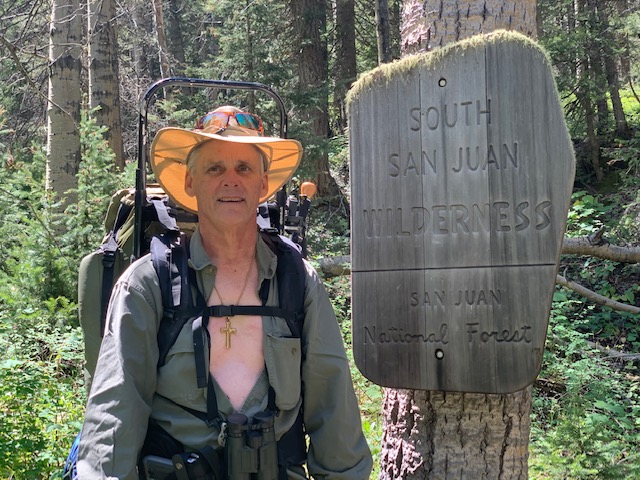
Know Your Physical Abilities and Limitations
Your fitness level directly affects your hunting experience. Cardiovascular endurance, strength, and agility are crucial for hiking rugged terrain, packing out an animal if you’re successful, game, and handling potential emergency survival situations.
Start a tailored fitness routine months before your trip, and make sure it’s consistent. Start slow and build up as you gain strength. No need to join a gym. Stairs, both up and down, will strengthen your legs for the long hikes up and down the mountains.
Grab a backpack and add weight to it as you progress to help build leg muscles and lung capacity. Those will be your limiting factors leg fatigue, back fatigue if backpacking, and most of all, lung capacity.
Unless you are local, your lungs are not ready for the thinner air of the mountains. But, even if hunting lower elevations chances are your lungs aren’t used to the amount of physical exertion you will be putting in on your hunt.
Gear Essentials for a DIY Wilderness Area Hunt
Let’s talk gear. If you are hiking in, the mantra here is simple: carry only what you need. A quality pack, suitable clothing for layering, a reliable weapon of choice, a shelter like a lightweight tent or tarp in case you get stuck out overnight, and water filtration should top your list. Remember, every ounce counts when you’re miles from civilization.
If you will be spike camping or full-fledged base camping, you will need additional gear, food, cooking utensils, and more that we will cover in another article. Remember, there’s no WalMart around the corner. If you think you’ll need it, you better bring it.
Now, don’t forget navigation. Even if you’re fond of modern tech like GPS, get familiar with old-school skills. Learn to use a map and compass – electronics can fail, but these tried and true tools don’t. Practice in local parks or take a course. You’ll never regret learning to navigate by natural landmarks and topo lines.
Wilderness Area Emergency Preparedness and Survival Skills
If you are going to be hunting in remote wilderness areas, you must have some basic knowledge of survival skills in case of emergency or sudden change in conditions. Accidents or unexpected situations can occur, and being prepared can be the difference between survival and disaster. Here’s what you need to know to keep safe.
First aid is your first line of defense in the wilderness. I always pack a comprehensive first-aid kit and am familiar with its contents before I set out. Knowing how to address common injuries, from sprains to lacerations, can keep a simple mishap from turning into a life-threatening situation.
When you’re miles from the nearest road, being able to signal for help can save your life. Carry multiple communication methods, including a whistle, a signal mirror, a two-way radio, and an emergency beacon. Phone service will be spotty to non-existent so you need alternatives.
IMPORTANT NOTE: Leave a hunt plan with someone that includes the approximate location you will be hunting and when you plan on returning. Include phone numbers for local authorities and search and rescue.
Finding and purifying water is another critical skill. Always have a plan for how you’ll access clean drinking water because dehydration can be life-threatening and drinking contaminated water can lead to diarrhea which will only make it worse.
Legal Considerations
Before heading into the wilderness, familiarize yourself with local hunting regulations and ensure all permits and licenses are in order. The information can be sourced from wildlife agencies or conservation departments, which provide hunters with guidelines that help protect natural resources and promote sustainable hunting practices.
When hunting in remote wilderness areas try to make choices that minimize the impact on the area and ecosystem. Practicing the ‘leave-no-trace’ philosophy means taking out everything you bring in, respecting wildlife, not altering natural features, and leaving the environment as you found it.
Setting Up Camp: Strategies for Remote Habitats
Your camp should be a reflection of the respect you hold for the wilderness, ensuring it’s well-managed, low-impact, and environmentally considerate. Choosing the right spot to set up camp is crucial when hunting in remote wilderness areas.
Start by seeking high ground which offers a strategic vantage point and ensures you stay dry. If it’s cold and windy, you may want to choose a location that offers a wind break. Keep a distance from water sources to protect wildlife corridors and preserve your access to uncontaminated water.
Your shelter must match the climate. In a forest, a hammock can elevate you above damp ground, while in colder areas a well-insulated tent is a lifeline. Prioritize a shelter that’s quick to assemble, as the weather in the wilderness can change without warning.
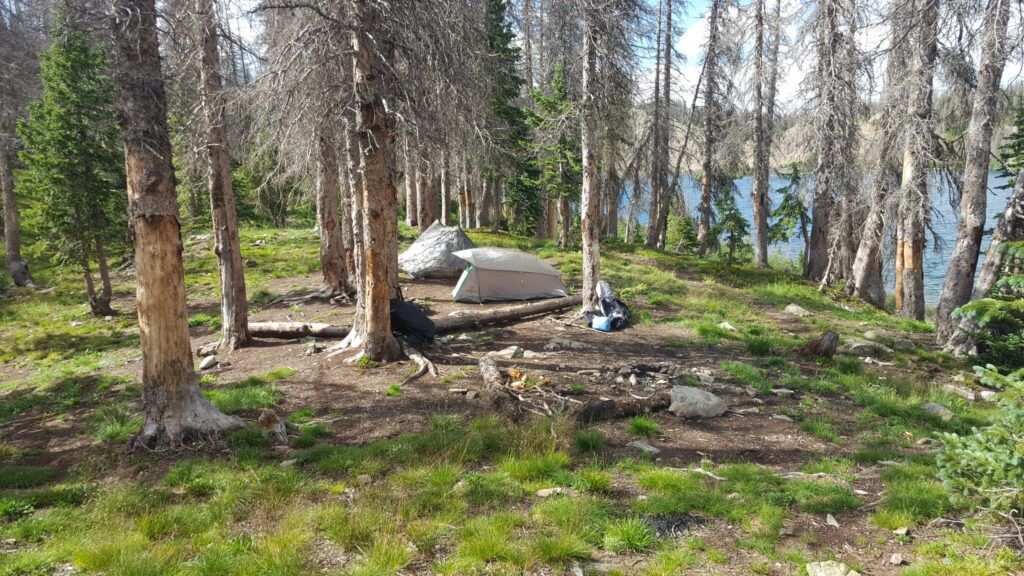
Finally, with open flames, it’s safety first. Stick to established fire rings or use a portable stove. Collect only deadwood that’s on the ground. Invest in a quality, lightweight stove for areas where fires aren’t feasible or legal.
As you prepare to set up camp for the actual hunt, remember to set your camp’s location for the best access to your hunting area but at the same time try not to push the game out of the area.
Final Thoughts on Hunting Remote Wilderness Areas
As you pack up your gear and prepare for the hunt, consider the memories to be made and the adventure to be had. A successful hunt isn’t just measured by the game you bring home; it’s also about the shared experiences and the lessons learned in the wild.
Remember, each trip into the wilderness is a chance to hone your skills and your understanding of nature, your quarry, and yourself. Stay informed about changing regulations to make sure that you stay legal, and these remote wilderness areas remain accessible for future generations to enjoy.
When you’re there, take a moment to appreciate the silence that only such remote places can offer. No cell phones, no email, no computers, just you and the great outdoors. There’s a profound satisfaction in knowing you’ve hunted in the wilderness and did it yourself.

Always keep in mind that your use of the wilderness area is a privilege. Uphold the highest standards of hunting ethics, and enjoy the rewards of DIY hunting in remote wilderness areas for many years to come.
As always, stay safe, enjoy the journey and please try to leave it cleaner than you found it. If you have any comments, questions, ideas, or suggestions please leave them in the comment section below and I’ll get back to you ASAP. You can follow us on YouTube: Man Art Creations for videos of our DIY Adventures.
Check Out Our Latest Articles:
- Complete Guide On Tracking Game Animals
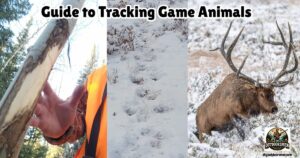
- DIY 4-Step Guide To Field Dressing And Quartering A Deer
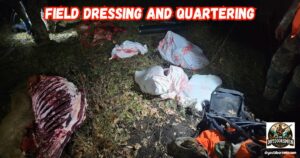
- Night Vision Binoculars For Nocturnal Hunting
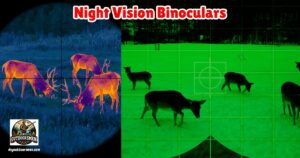
- The Science Behind Camouflage Patterns For Deer Hunting

- Binocular Accessories For Hunters

- 9 Tips for Using Trail Cameras To Track Deer Movements

P.S. – Thanks so much for checking out our blog we really appreciate it. Just so you know, we may receive a commission if you click on some of the links that appear on our site. This helps us keep our content free and up-to-date for everyone. We appreciate your support!
